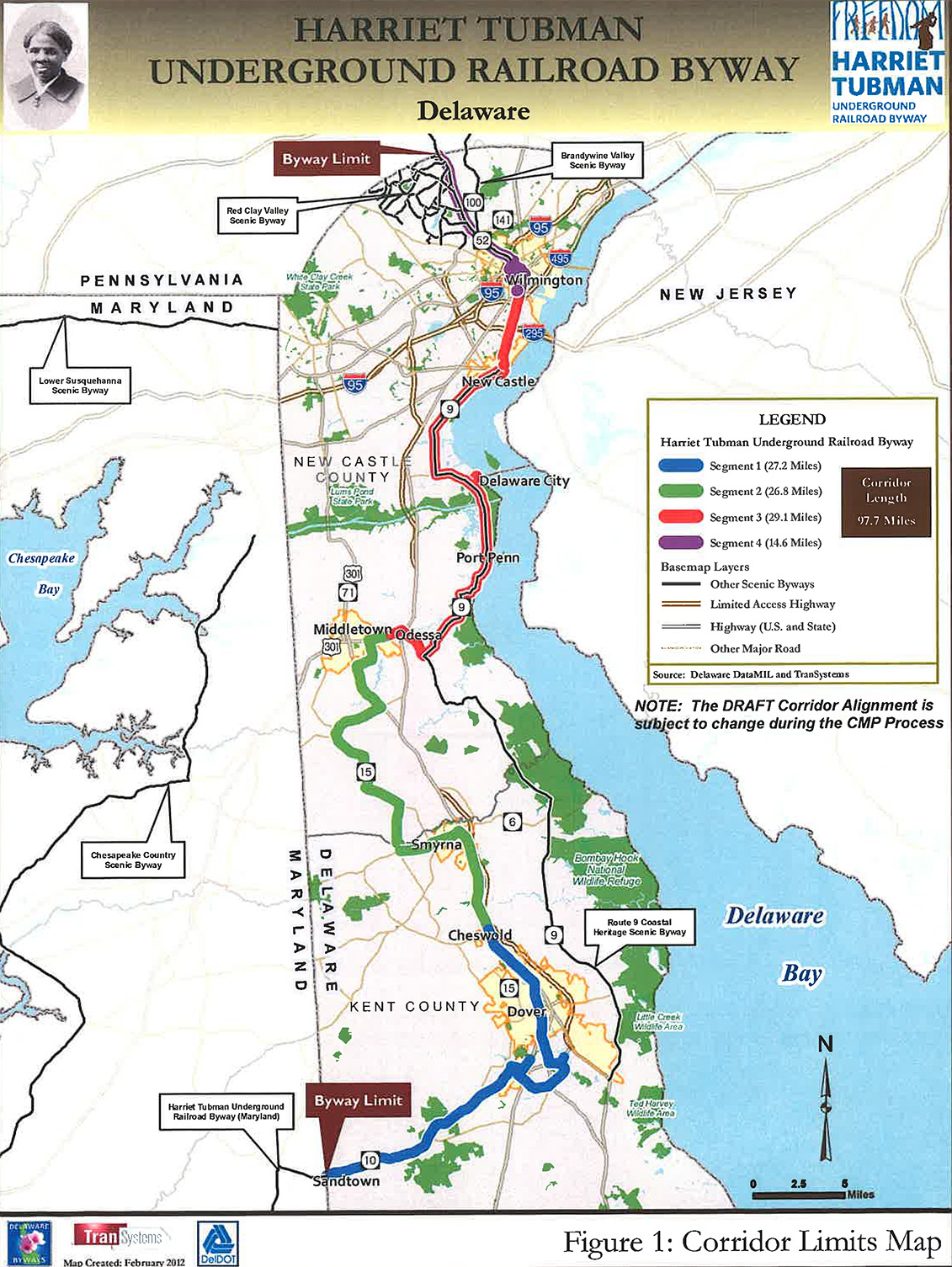Underground Railroad Coalition of Delaware
URCD Mission
The Underground Railroad Coalition of Delaware promotes and preserves the authentic stories of the Underground Railroad in Delaware.
- We acknowledge that research will never be complete, so we invite and encourage others to delve into stories, names or threads that interest them, and to share the facts that they find.
- We share information with other members of the Coalition, support member programs relevant to our mission, and collaborate on projects as opportunities arise.
- We strive to promote documented stories. When compelling research becomes known that shifts the story, we adjust as warranted. When we know better, we do better. Undocumented oral traditions and folklore are treated with respect, but are identified as such until they can be documented.
- We respect the research of others, use it only with permission, and cite the work properly.
- We do not promote myths because they disrespect the character and actions of real humans who struggled and performed heroic acts. Myths distort authentic history.
URCD History
The Coalition includes cultural historical organizations, state agencies and individual members who share our mission to promote and preserve the authentic stories of the Underground Railroad in Delaware. It is a volunteer-led, tax-exempt, 501©3 non-profit entity. The Board of Directors is also the Byway Management Organization of the Harriet Tubman Underground Railroad Byway, Delaware segment.
The Coalition was incorporated in 2002 to begin to assemble a research framework and public history programs to celebrate the rich history of Delaware and the clandestine network that chipped away at the institution of slavery. The Coalition was supported by the City of Wilmington and the National Network to Freedom by major matching grants. Partners and consultants produced the Delaware Underground Railroad, a Historic Research Context; established the Delaware segment of the Harriet Tubman Underground Railroad Byway; wrote successful site, program and archival nominations to the National Network to Freedom; created the study and research guide, Reconstructing Delaware’s Free Black Communities, 1800-1870; supported three exhibits at partner institutions; and, participated in the visit of the Amistad, and the local Rites of Ancestral Return for the African Burial Ground remains.
The Coalition became an independent organization in 2009 at the close of the grants, and began to build membership, hold regular public meetings and lectures, host conferences, create outreach material, and plan for the future. In 2012 the organization, along with Delaware Byways and the National Scenic Byways Foundation, worked with a consultant to complete the Tubman Byway Corridor Manage Plan and complete the requirements for a full State Byway program. The Coalition created the Research Jam program to encourage members to present research in-progress and receive advice.
HTUR Byway
The route of the Harriet Tubman Underground Railroad Byway (HTUR Byway) is anchored by people and places that Tubman said were important to her. Tubman was interviewed by Dr. Wilbur Siebert, a professor at Ohio State University, at the turn of the 20th century as he sought to record the first-hand stories of people who experienced slavery and those who acted as friends of the enslaved.
The HTUR Byway picks up where the Maryland Harriet Tubman Underground Railroad National Scenic Byway ends, at the state line near Sandtown, Kent County. While the Maryland segment chronicles Tubman’s early life and the larger community that shaped her as a young woman, the Delaware segment focuses on Tubman’s rescue missions from the time of her successful escape from enslavement in 1849 through 1860. The Delaware program received invaluable encouragement and support from the Maryland partners who made the first HTUR Byway possible.
The Delaware corridor is approximately 98 miles long, running roughly southwest to northeast from Sandtown, Kent County to Centreville, New Castle County. The corridor passes through Willow Grove, Camden, Dover, Smyrna, Clayton, Blackbird, Townsend, Middletown, Odessa, Port Penn, Delaware City, New Castle, Wilmington and on to the state line. It includes natural and agricultural scenes, towns, cities and suburbs. The byway is signed, turn by turn, throughout its length. It includes places and stories of enslavement, escape, refuge, assistance and legal actions from the 18th and 19th centuries, some related to Tubman and some independent of her. The Byway program is one tool among many to tell the story of freedom.

Interactive Map of Sites
The route of the Harriet Tubman Underground Railroad Byway (HTUR Byway) is highlighted in red on this interactive map.










